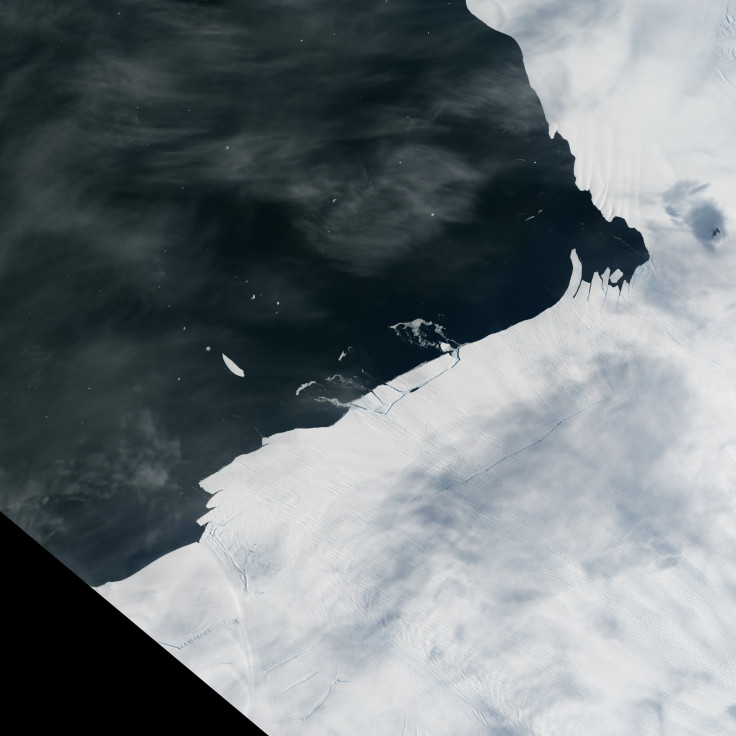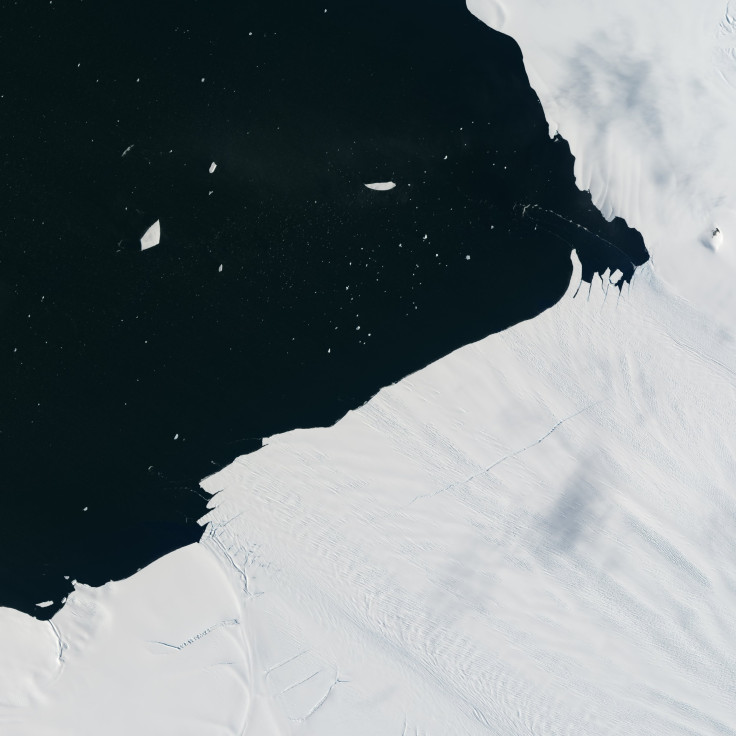Antarctica Ice Shelf: Pine Island Glacier Loses Miles-Long Chunk In Glacial ‘Aftershock’

The Pine Island Glacier in Western Antarctica, already under significant stress caused by human-induced climate change, calved some more in the last week of January, shedding a miles-long chunk of ice into the Pine Island Bay. The latest calving is being considered by glaciologists as an “aftershock” of the much larger loss of ice that happened from the glacier in 2015.
Images of the calving were captured by the Operational Land Imager instrument aboard NASA’s Landsat 8 satellite. Launched in February 2013, it has a near-polar orbit, allowing it to capture images of Antarctica fairly easily.


Scientists watch Pine Island closely because it is one of the main glaciers carrying ice from the inner regions of the West Antarctica Ice Sheet to the ocean, delivering about 19 cubic miles of ice to the Pine Island Bay every year. The calving of the sea-facing shelves reduces the ability of the glacier to check the flow of ice into the ocean. And evidence has been pointing to faster loss of ice in the future, contributing further to already-rising sea levels.
Ian Howat, a glaciologist at Ohio State University, said in a statement the iceberg that floated into the Pine Island Bay in January was likely the result of an “aftershock” from the 2015 incident in which a 20-mile rift below the ice surface caused an iceberg 225 square miles big to drift into the ocean.
“I think this event is the calving equivalent of an ‘aftershock’ following the much bigger event. Apparently, there are weaknesses in the ice shelf — just inland of the rift that caused the 2015 calving — that are resulting in these smaller breaks.”
A number of other smaller rifts exist a few miles inward from the ice front on Pine Island. However, most of them are not visible because they are growing upward from the bottom of the shelf, where warm water is causing the ice to thaw, melting the glacier from the inside out. These rifts are expected to cause even more calving in the near future.
Howat said: “Such ‘rapid fire’ calving does appear to be unusual for this glacier.” However, the phenomenon “fits into the larger picture of basal crevasses in the center of the ice shelf being eroded by warm ocean water, causing the ice shelf to break from the inside out,” he added.
Glaciers in East Antarctica — including Totten, the largest glacier in the region — are also melting fast under the impact of warm ocean water. The flow of meltwater into the ocean is also happening in the Arctic, at the other end of Earth, contributing its own share to the rise in global sea levels.
© Copyright IBTimes 2024. All rights reserved.




















